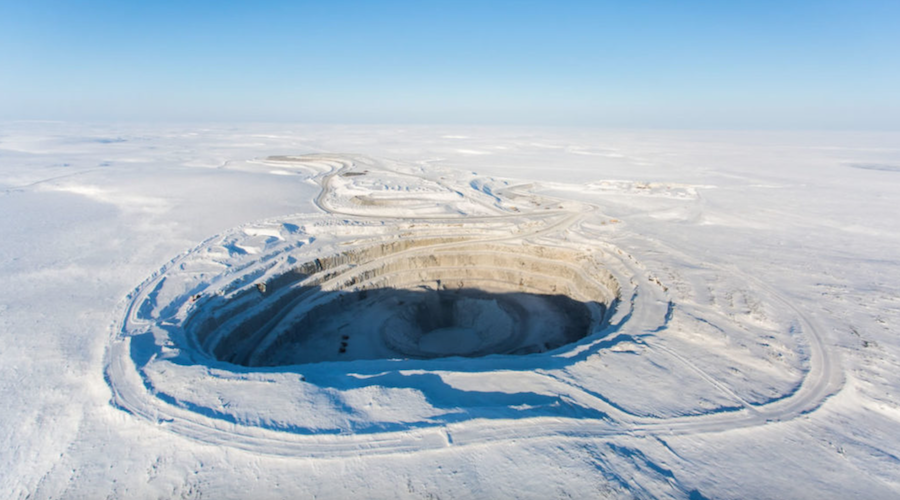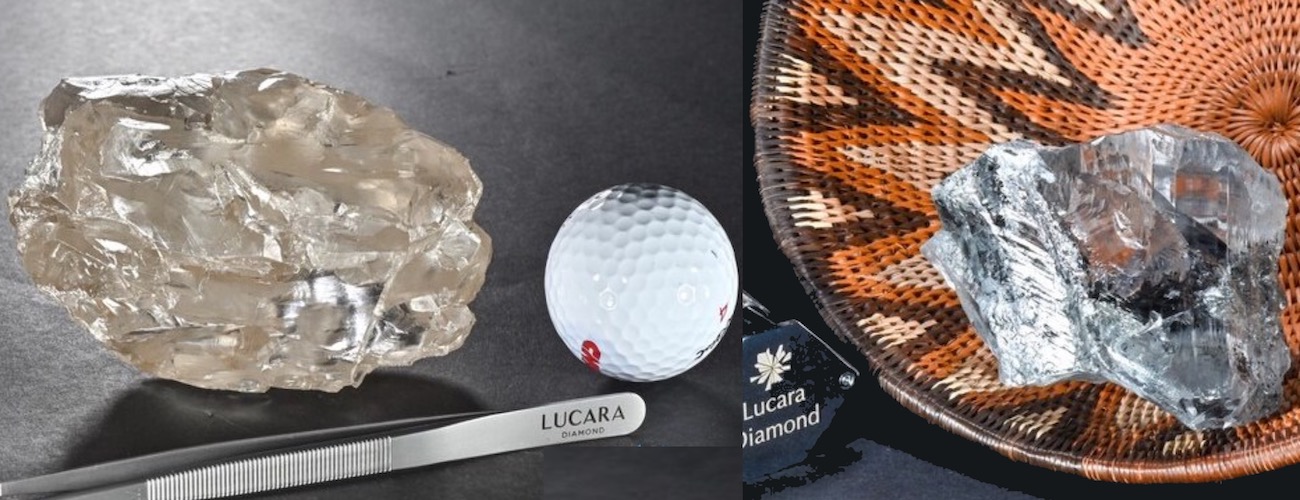De Beers’ NWT diamond cannery takes shape
The recent history of diamond exploration northeast of Yellowknife is bearing fruit, with the Ekati and Diavik mines already in production. Now the Snap Lake project has been permitted for development.
The kimberlite dyke was discovered in 1997 by Winspear Resources. In 2000, De Beers Canada Mining Inc. purchased Winspear for $305 million, and in 2001 it acquired Aber Diamond Corp.’s minority interest in the project for US$114 million, making De Beers sole owner and operator. De Beers’ vice-president-NWT, John McConnell, recently discussed the Snap Lake project with CMJ.
The dyke averages 2.5 m thick with consistent grade, outcropping on the Northwest Peninsula and dipping 11 to 15 northeast under Snap Lake and beyond. The mineable (indicated) resource stands at 18.3 million tonnes grading 1.46 carats/tonne to a 600-m depth, with a dilution of about 34%. The resource is open at depth. The diamond product has been valued at US$109 per carat.
Snap Lake is on the edge of the treeline, 220 km northeast of Yellowknife and 100 km south of Diavik. It is linked by a 35-km winter road to the Tibbitt-Contwoyto winter road, open less than two months per year. Year-round access is by airplane from Yellowknife.
De Beers worked for four years on feasibility studies and permitting, using contractors including Golder Associates (environment) and AMEC (EPCM consultant). The Class A water licence and Type A land use permit were granted at the end of this May, allowing the project to move into construction.
The approved plan is to build a 3,000-tonnes/day underground mine. The processing plant will produce 4,200 carats/day (1.5 million carats/year) of diamonds, which will be shipped to De Beers’ marketing arm, the Diamond Trading Co., in London, UK. The capital cost for the project is $625 million. Ongoing operating expenses once the mine is in production will be $130/tonne or $140.4 million/year. Revenue of $226 million is expected annually.
Over 250 truckloads of equipment, fuel and goods were transported to the site over the winter road starting in February 2004. One of the first jobs was to install the water treatment plant and dewater the mine, flooded since late 2001. The current work includes 4,000 m of underground development and bulk sampling; low-profile underground mining equipment is being tested. The ore is being processed in the 10-tonne/hour bulk sample plant. De Beers is now close to completing Phase One pre-development of the mine.
Construction (Phase Two) is scheduled to begin early in 2005, and the mine will reach full production by 2008, with a 20-year life. Infrastructure for the final mine will include a 350-person accommodation building, a service complex (admin, machine and fabricating shops, warehousing), a power plant (four 3,300-kW and four 725-kW diesel generators), an expanded fuel-tank farm to store up to 35 million L of diesel fuel, and a 1,650-m-long airstrip.
Phase Three begins with the commissioning of the plant in the fourth quarter of 2007. Production will build over nine months, with full production the middle of 2008.
Mining and processing
The unusual configuration of the ore means the mining staff will have to develop the best sequencing and backfill methods, according to McConnell. Fortunately both the ore and the granite and metavolcanic country rock are hard and competent, making for good ground conditions.
The kimberlite will be mined using a modified room and pillar method. A series of parallel drifts will be developed in a panel with a long rib pillar between each pair of adjacent drifts, using one double-boom and seven single-boom electric hydraulic jumbos. Blasting will use mainly emulsion because of the wet conditions.
The secondary phase will slice the farthest end of all the rib pillars at a right angle to the drifts. The remaining ore in the pillars will be recovered. The open space at the back of the panel will be backfilled with paste fill. (Partially dewatered processed kimberlite will be used for the paste fill.) Mining will continue to retreat until the entire panel is backfilled. It will be necessary to leave a crown pillar to a depth of 100 m between the lakebed and the workings.
Ten 3-m3 load-haul-dumpers will feed four 40-tonne (20-m3) haul trucks that will dump the ore down chutes to an underground primary jaw crusher on the 160 level (290 m below surface), where it will be reduced to -150 mm. The crushed ore will be transported to surface by a conventional collecting conveyor that will feed directly into the processing plant or a 3,000-tonne coarse ore surge bin.
The plant is designed to recover diamonds with a size range of 1.5 mm to 32 mm. Crushed ore enters the plant where it is washed, screened, conveyed, pumped and cycloned. A dense media separation (DMS) circuit uses ferrosilicon powder to concentrate the heavy minerals.
The DMS concentrate is dried in the recovery plant. Two stages of x-ray sorting minimize diamond loss. Then single particle sorters (Raven machines) use laser Raman spectroscopy to distinguish diamonds. Final sorting is by two SCAPS (sizing, counting and processing system) machines that differentiate particles optically, based on shape, size and colour. SCAPS concentrate reports to the canning machine. After filling, the canister is sealed, weighed and verified via a bar code reader, and automatically transported to the vault before shipment to Yellowknife. Total recovery in the plant is 97% by weight of all free diamonds.
Diamond control is a key element of the facility design. A diamond control team will develop and implement the system, using a risk evaluation model to prioritize the risks. Key components will be: limiting access and video surveillance; using advanced, automated diamond recovery processes to minimize the need for human intervention; using security personnel; and developing a culture and ethos that discourages theft.
Employment
There are 120 people on site now, but that will rise to 500 during construction. The mine’s permanent workforce will number 500.
Snap Lake will be a fly-in operation, with a two-weeks-in/two-weeks-out rotation. De Beers is committed to northern hiring targets of at least 40% during construction and 60% during operations and closure, including as many Aboriginals as possible. There is a great need for educating and training to prepare area residents for the workforce. De Beers is working with Ekati and Diavik and the territorial government on a huge training program, including the newly-formed Mine Training Society that will fund targeted training projects.
Eighty per cent of the contracts awarded for Phase One in 2004 have gone to northern companies. Some of the larger contractors include KeTe Whii/Procon Mining, which is currently doing the underground development. Mechanical and electrical contracts during Phase One will be done by KeTe Whii/Ledcor. Camp catering and maintenance are by Ekati Services, security is being handled by SECURECheck, and East Arm Air is providing flight services.





Comments